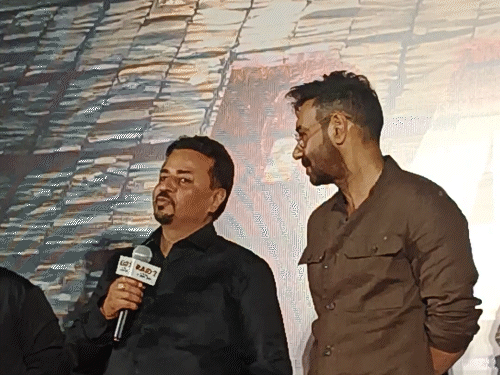6 days ago
- Copy link

Narendra Modi Prime Minister
Ten years ago, we started such a journey in a field with full faith in an area where no one had gone before. Where for decades it was suspected that Indian technology would be able to use or not, we changed that thinking and believed in Indians’ ability to use technology.
While for decades the only thought that the use of technology would deepen the gap between the rich and the poor, we changed that mindset and eliminated that gap through technology. When the intention is correct, the innovation strengthens the underprivileged.
When the approach is inclusive, the technique brings changes in the life of the marginalized people. This belief was the foundation of Digital India- a mission that began to make access to everyone democratic (easy), to create an inclusive digital infrastructure and provide opportunities.
Internet access was limited in 2014, digital literacy was low and online access to government services was very limited. Many people suspected whether a huge and diverse countries like India could really become digital. Today, this question has been answered not in data and dashboard, but through the lives of 140 crore Indians.
From governance to education, transactions and construction, Digital India ranks everywhere. In 2014, India had about 25 crore internet connections. Today this number has increased to more than 97 crores. Optical fiber cable over 42 lakh kilometers, which is 11 times the distance between the Earth and the Moon, is now adding remote villages.
India’s 5G rollout is one of the fastest rollouts in the world and 4.81 lakh base stations have been set up in just two years. High-speed internet has now reached from urban centers to advance military posts such as Galwan, Siachen and Ladakh.
India Stack- which is our digital backbone- has enabled platforms like UPI, which now makes more than 100 billion transactions annually. About half of the total real-time digital transactions in the world are in India.
An amount of more than Rs 44 lakh crore has been transferred directly to the citizens through the Direct Benefit Transfer (DBT), which ended the role of middlemen and a leakage of Rs 3.48 lakh crore has been stopped. Schemes like ownership have issued more than 2.4 crore property cards and mapped 6.47 lakh villages, which has led to an end to land uncertainty.
India’s digital economy is now empowering MSME and small entrepreneurs. ONDC (Open Network for Digital Commerce) is a revolutionary platform, which opens the window of new opportunities by establishing direct contact with the huge market of vendors and buyers.
GEM (Government e-Marketplace) allows the public to sell goods and services to all the departments of the government. This not only gives a huge market to the common citizen but also saves the government. Imagine, you apply online for Mudra Loan. Your credit qualification is judged through the account aggregator framework.
You get a loan, you start your business. You are registered on GEM, supply schools and hospitals and then make it bigger through ONDC. ONDC has recently crossed the 20 crore transaction mark- in which the last 10 crore have been in just 6 months.
From Banarasi weavers to bamboo craftsmen of Nagaland, now sellers are reaching the customer across the country without middlemen. GEM has crossed GMV of Rs 1 lakh crore in 50 days, which includes 22 lakh vendors. These include more than 1.8 lakh women operated MSMEs, who have supplied Rs 46,000 crore.
India’s Digital Public Infrastructure (DPI)- such as Aadhaar, Kovin, Digilocker, Fastag, PM-WANI and One Nation One Subscription is now being read and adopted globally. Kovin enabling the world’s largest vaccination campaign, issuing 220 crore QR-satyapit certificates.
Digilocker- Who has 54 crore users- hosting more than 775 crore documents in a safe and uninterrupted manner. India launched Global DPI repository and $ 25 million social impact fund during its G20 chairmanship, which could adopt inclusive digital ecosystems in Africa and South Asia.
India is now included in the world’s top 3 startup ecosystem, which has more than 1.8 million startups. But this is not just a startup movement, it is a technology renaissance. There is a big progress in terms of AI skills and talent among the youth in India.
Under the $ 1.2 billion India AI Mission, India has ensured 34,000 GPU access to a price that is the lowest globally- less than 1 dollar per GPU. With this, India has not only become the cheapest internet economy, but also the most economical computing hub. The next decade will be more transformative. We are moving beyond digital governance to global digital leadership- from India First to India for the World.
The world is looking at us for digital revolution … Digital India is no longer a government program, it has become a mass movement. It is the center of building self -sufficient India. And India is making India’s innovation partner. The world is looking towards India for the next digital revolution.









Leave a Reply